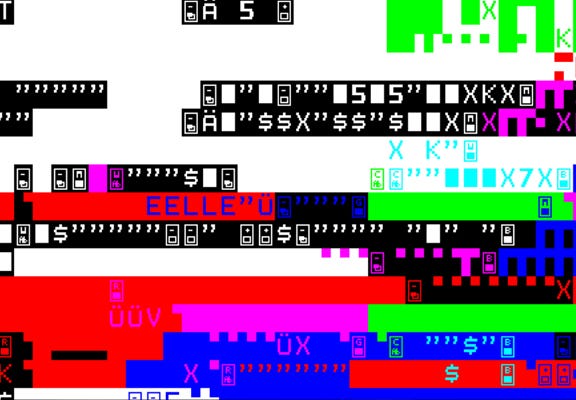
Assignments
/participation 20%. Your participation grade covers your attendance and your upbeat, dynamic engagement in classes and class activities (See attendance requirement/ policy below), as well as your attendance of the field trip on March 04. Major points for actively referring to specific excerpts from that week's reading! If you are generally quiet in class, or otherwise concerned about how I might perceive your engagement, come see me so we can strategize your participation so that it is comfortable yet challenging to you, and trackable for me.
Another note on participation: Learning digital tools and processes can be hard and sometimes intimidating. We have to ask questions, and yet for some reason we are scared to (why?). In this class I will reward you if you keep asking questions until you get it, and those of you who are eager to help your peers. We often need to hear something explained in a different way in order to understand.
A1. Following a Recipe 10% Shoot a video, make a performance, or make a photo essay of yourself cooking your favorite recipe, breaking down the process for your audience. What are your ingredients, what are the steps, how do you personalize the recipe with additions and subtractions, certain gestures...? See full description here
Full guidelines also handed out in class.
A2. Recipes for Disaster: Processing Monsters 10% Lukas Vojir started making processing monsters in order to learn how to use Processing and promote code sharing. The rules for making a processing monster are simple: strictly black and white (and grayscale) and mouse reactive. To add to Vojir's original prompt, your Monsters should employ conditionals and ideally have a for loop too. Finally, work with Strings and the text() function and quote at least one relevant sentence from Mary Shelley's Frankenstein. See full description here
Full guidelines also handed out in class.
A3. Repeating History 10% Find an early example of New Media Art, or Computer Art, -- something that uses instruction and repetition to create an aesthetic form. Reverse engineer the work in Processing. Look at 9 Evenings: Theatre and Engineering, The Information Show, Nam June Paik, Mark Tribe, net.art, oli lialina, and in anthologies of new media art. For early 20th-c computer artists, look at Ben Laposky, Lillian Schwartz, Frieder Nake, Michael Noll.... If the artwork is formal and visual, it should replicate the visual elements of the work as well as the mathematical and logical operations. If the work is more conceptual in nature, or has elements that exist beyond the screen, you have more leeway with how this piece is implemented (but it must be done in Processing). See full description here
A4. Dynamic Conceptual Paintings 5/15% A4a: Write out a conceptual painting. Following in the tradition of conceptual artists like Sol Lewitt write a recipe or instruction based artwork in natural language, develop a set of instructions for a dynamic abstract painting.
Review Sol LeWitt's retrospective at MASSMoca (you can click on the thumbnails to see the instructionals), as well as Casey Reas' exploration of his work in Software Structures.. Keep in mind that you will be passing this recipe on to a fellow classmate who will turn the instructions into code....
A4b: Using object oriented programming and functions, implement the instructional/ conceptual painting written by
a fellow student in code. Consider the elements of the recipe/ instructional you received and first, turn it into
algorithmic pseudocode as described by Daniel Shiffman. This can then be translated into variables and methods,
inside of classes that you create. See full description here
A5. Dynamic Transformations 15% Work with a peer's dynamic conceptual painting and translate it into a new medium, or environment; extend it in some way. You might get aspects of the code to generate mechatronic activity through Arduino, or create other real world activity (two ellipses collide and an email gets sent to a politician?). You could take the shapes your dynaic painting generates and laser cut them. Perhaps you take a complex shape and translate it into a fashion accessory. Or you might translate the code back into instructionals for an entirely new medium -- a performance, dance, or a living sculpture for instance....
See full description here
A6. Reading Responses 10%
We will use Tumblr in this class to share our work with one another, and for 6 reading responses. Reading responses are due by the Friday after the reading is due, by 11:59p. Reading responses can be both visual and/or written. It must be clear that the text has been read; if the primary response is through visual material, consider adding bullet points that connect the image to the reading so it is clear your are grappling with the text. You can also upload audio recordings.
https://studioart100spring18.tumblr.com/ You may only submit one response a week, so budget your responses throughout the semester so that you aren't scrambling to complete your responses the last few weeks of class. Submit the Friday after the reading is due, by 11:59p.